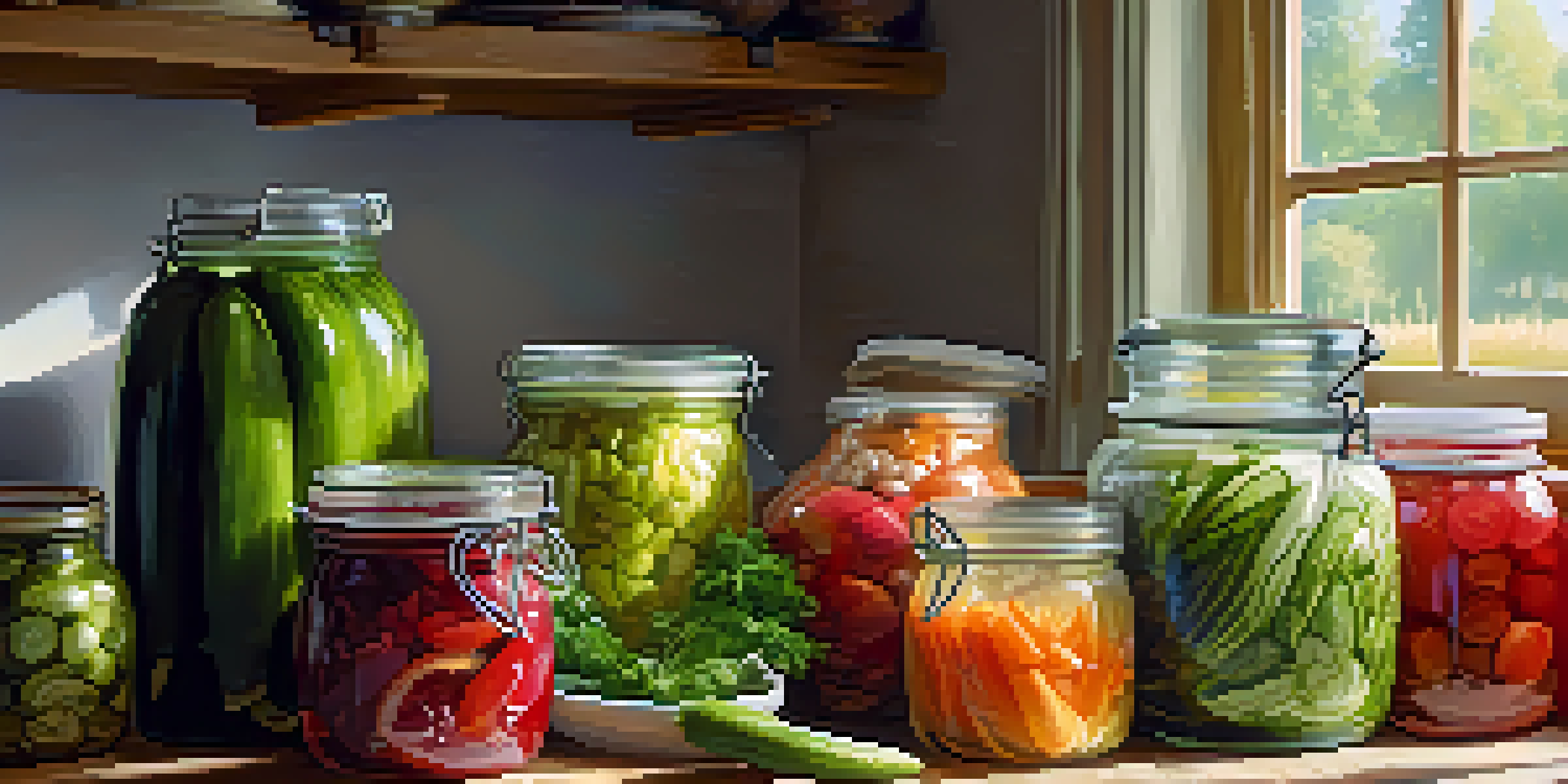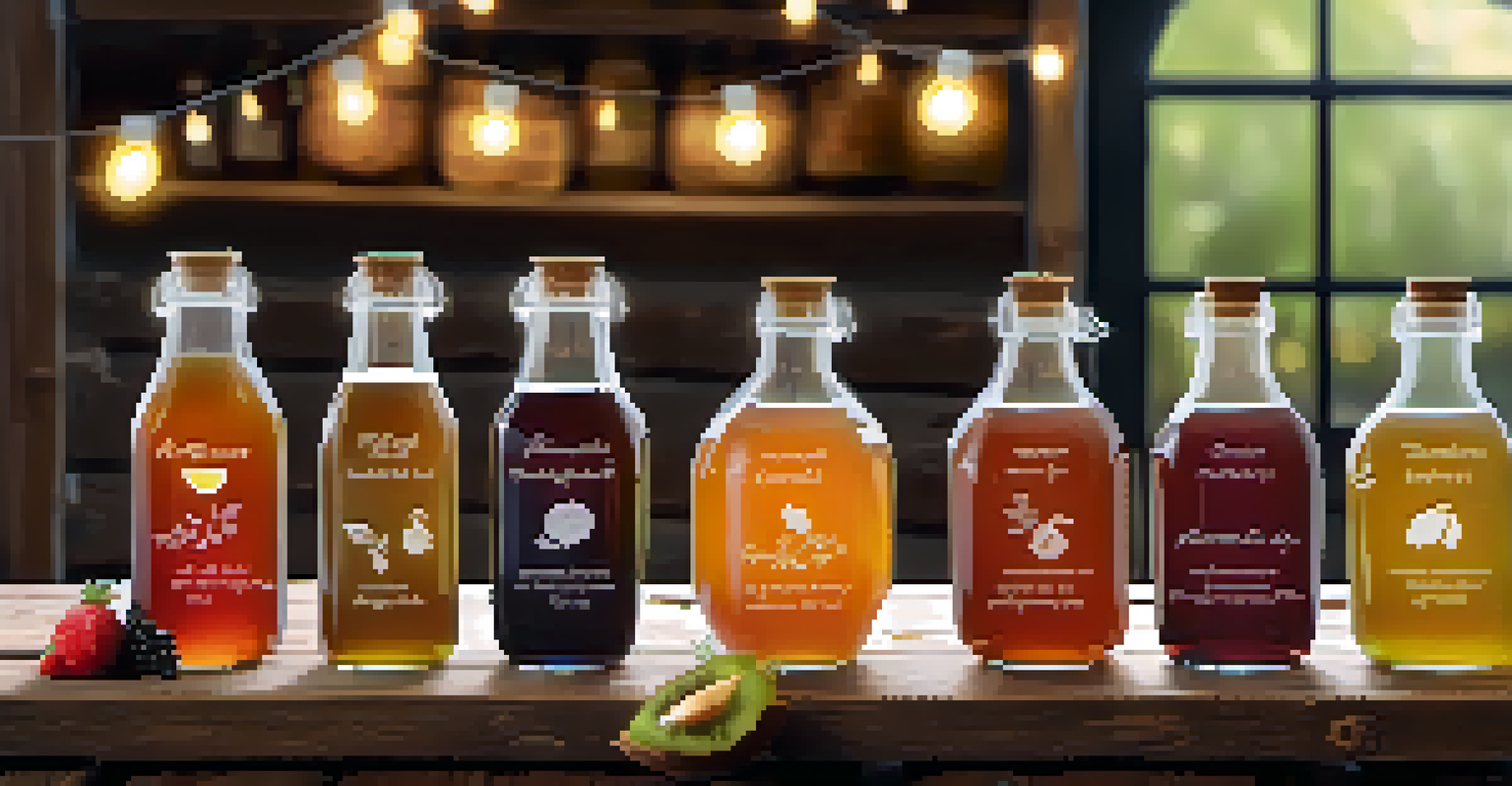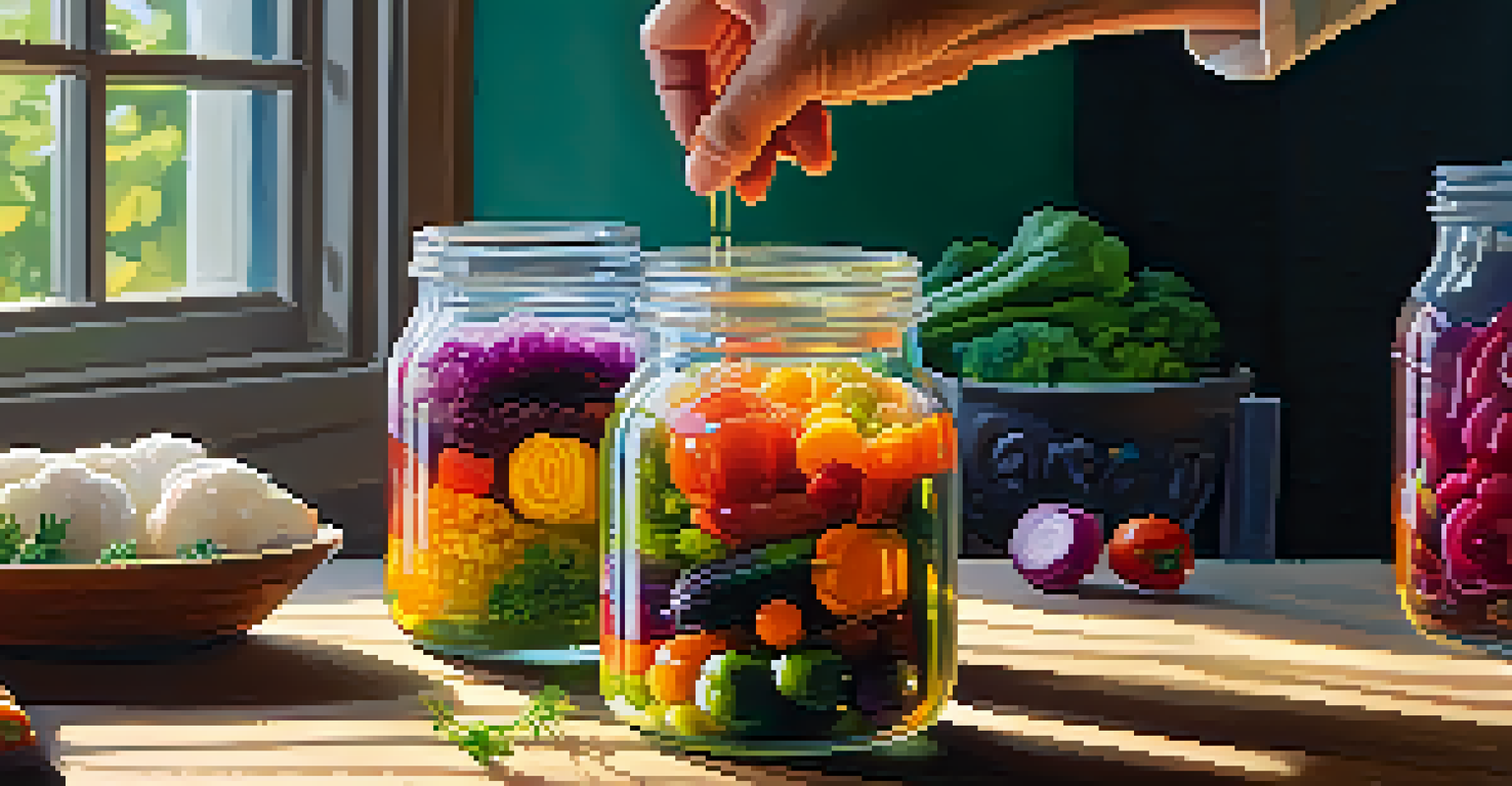Easy Raw Food Fermentation Techniques for Beginners

Understanding Fermentation: A Beginner's Overview
Fermentation is a fascinating process that transforms food through the power of microorganisms. Essentially, it involves the breakdown of sugars by bacteria and yeast, resulting in unique flavors and enhanced nutritional benefits. For beginners, it can seem daunting, but the beauty of fermentation lies in its simplicity and the delicious results it yields.
Fermentation is the ultimate form of recycling, turning waste into something delicious and nutritious.
Think of fermentation like a friendly science experiment happening right in your kitchen. Just as a caterpillar transforms into a butterfly, your raw foods can evolve into something entirely new and exciting. This technique not only preserves food but also increases its digestibility, making it a win-win for health enthusiasts.
In this guide, we'll explore easy raw food fermentation techniques that anyone can try at home. You'll learn how to harness the power of fermentation to create tasty, probiotic-rich foods that can elevate any meal.
Essential Equipment for Raw Food Fermentation
Before you dive into fermentation, it’s helpful to gather some basic equipment. At the core, you'll need clean glass jars or fermentation crocks, which provide a safe environment for your bacteria to thrive. A simple lid or cloth cover can also help to keep unwanted pests at bay while allowing gases to escape.

You might also want a scale to measure ingredients accurately, especially if you're following specific recipes. A pH meter can be a handy tool for those who love precision, helping you monitor the acidity levels of your ferments. But remember, many beginners successfully ferment without all this gear—sometimes, simpler is better!
Fermentation Simplified for Beginners
Fermentation is an accessible process that transforms fresh ingredients into flavorful, probiotic-rich foods.
Having the right tools can make the process easier and more enjoyable, but don't let lack of equipment hold you back. With just a few common kitchen items, you can start your fermentation journey today!
Choosing the Right Ingredients for Fermentation
The ingredients you select for fermentation play a crucial role in the outcome of your final product. Fresh, organic vegetables are often the best choice, as they contain the natural bacteria needed for fermentation. Think cucumbers for pickles or cabbage for sauerkraut—these veggies are not just tasty but also rich in nutrients.
The process of fermentation is a dance between the microorganisms and the food, creating flavors that are uniquely yours.
It's essential to avoid any produce that is overly ripe or spoiled, as this can introduce unwanted flavors or bacteria. Ideally, you want ingredients that are vibrant and fresh, much like you would choose for a salad. Freshness is key, as it enhances the fermentation process and leads to better results.
Additionally, consider experimenting with herbs and spices to add unique flavors to your ferments. Garlic, dill, and chili peppers can all bring a delightful twist to your creations, allowing you to personalize your ferments to suit your taste buds.
The Basics of Fermenting Vegetables
Fermenting vegetables is one of the easiest ways to get started with raw food fermentation. Begin by chopping your chosen veggies and mixing them with salt, which acts as a natural preservative and helps draw out moisture. A general rule is to use about 1-3 tablespoons of salt per quart of vegetables, depending on your taste preference.
Once mixed, pack the veggies tightly into your jar, ensuring they are submerged in their own brine. This is crucial as it prevents exposure to air, which can lead to spoilage. If there's not enough liquid, you can add some salted water to keep everything submerged, much like tucking your veggies into a cozy blanket!
Essential Tools for Fermentation
Basic equipment like glass jars and salt can help you start fermenting at home without the need for advanced tools.
Seal the jar and let it sit at room temperature for several days, checking it daily. Taste your ferment after a few days; you'll be amazed at how quickly the flavors develop. When it’s to your liking, you can transfer it to the fridge, slowing down the fermentation process while preserving that delicious tang.
Exploring Fermented Beverages: Easy Recipes
Fermented beverages like kombucha or water kefir are delightful and refreshing options for beginners. To make kombucha, all you need is sweetened tea and a SCOBY (symbiotic culture of bacteria and yeast). This magical ingredient transforms your sweet tea into a tangy, effervescent drink that’s not only tasty but also packed with probiotics.
For water kefir, you can use sugar water or fruit juice as your base, along with water kefir grains. Simply combine these ingredients in a jar, let them ferment for 24-48 hours, and voila! You’ll have a delicious, fizzy beverage that can be flavored with fruits or herbs for added zest.
Both of these beverages are not only enjoyable but can also be a fun project to share with friends and family. Imagine hosting a tasting party where everyone can sample different flavors of kombucha or water kefir—what a great way to introduce others to the world of fermentation!
Troubleshooting Common Fermentation Issues
As with any new skill, fermentation may come with its share of hiccups, but fear not—most issues are easily resolved! One common problem is the appearance of mold on your ferments. If this happens, it's important to act quickly: simply remove the moldy section and ensure your veggies are submerged in brine to prevent future growth.
Another issue could be overly salty or bland ferments. If your ferment is too salty, consider diluting it with fresh vegetables or water, while bland ferments can benefit from additional spices or herbs to enhance the flavor. Remember, fermentation is as much an art as it is a science, so don’t hesitate to adjust to your taste!
Enjoying the Benefits of Fermented Foods
Incorporating fermented foods into your diet enhances flavor and supports gut health, making meals both delicious and nutritious.
Patience is also key in fermentation. Sometimes, a batch may take longer than expected to reach optimal flavor. Trust the process and keep tasting—your perfect ferment is out there waiting to be discovered!
Enjoying the Benefits of Your Fermented Foods
Once your fermentation journey is underway, you'll be rewarded with delicious, probiotic-rich foods that can elevate your meals. Fermented foods are not only flavorful but also support gut health, digestion, and even boost your immune system. Adding these tasty additions to your diet can be a game-changer for your overall wellness.
Think about incorporating your homemade pickles into sandwiches, topping salads with sauerkraut, or sipping on a refreshing glass of kombucha. The possibilities are endless, and the flavors can truly transform your meals. Plus, sharing your creations with others can inspire them to embark on their own fermentation adventures!

Embrace the journey, and enjoy the benefits of your hard work. With each batch, you’ll gain confidence and creativity in the kitchen, making fermentation not just a method of food preservation, but a source of joy and connection.